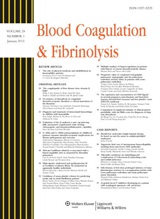
Similar Clinical Outcomes in Oral TXA vs Epsilon-Aminocaproic Acid Up to 30 Days After THA Surgery

Similar Clinical Outcomes in Oral TXA vs Epsilon-Aminocaproic Acid Up to 30 Days After THA Surgery
Tranexamic acid versus aminocapróic acid in multiple doses via the oral route for the reduction of postoperative bleeding in total primary hip arthroplasty: a prospective, randomized, double-blind, controlled study
Blood Coagul Fibrinolysis. 2021 Mar 1;32(2): 132-139.Did you know you're eligible to earn 0.5 CME credits for reading this report? Click Here
Synopsis
One hundred and two patients scheduled to undergo an elective cementless primary unilateral total hip arthroplasty (THA) to treat either osteoarthritis, osteonecrosis of femoral head or developmental dysplasia of hip were randomized to receive either oral tranexamic acid (TXA) or oral epsilon-aminocaproic acid (EACA) which were both administered pre-operatively (2h pre-incision) and at 6 and 12 ho...
To view the full content, login to your account,
or start your 30-day FREE Trial today.
FREE TRIAL
LOGIN
Forgot Password?
Explore some of our unlocked ACE Reports below!

Learn about our AI Driven
High Impact Search Feature
Our AI driven High Impact metric calculates the impact an article will have by considering both the publishing journal and the content of the article itself. Built using the latest advances in natural language processing, OE High Impact predicts an article’s future number of citations better than impact factor alone.
Continue



 LOGIN
LOGIN

Join the Conversation
Please Login or Join to leave comments.